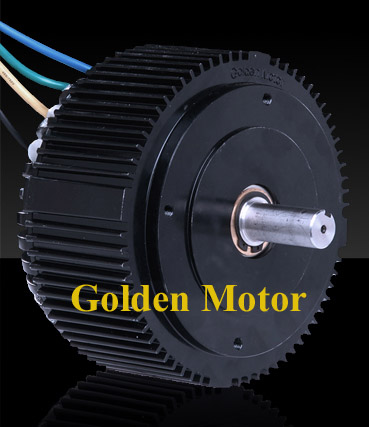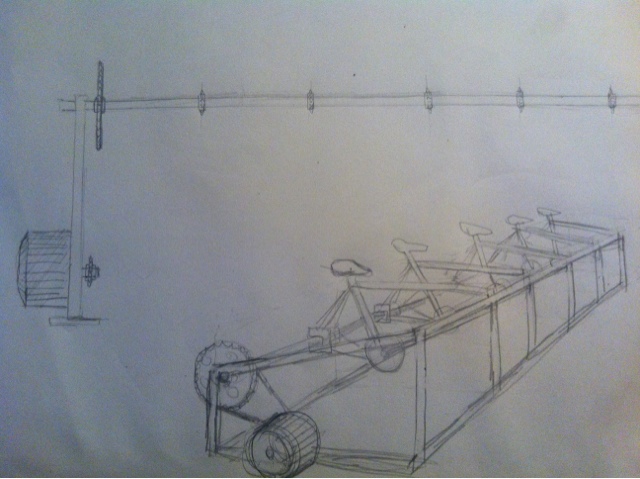gestalt
10 kW
OK, so a pedicab friend of mine is part of a group putting together a DIY fest at ringer park in allston Massachusetts august 24th http://www.allstondiyfest.com. In years before they had a guy who brought a pretty nifty three hub motor powered generator to power a small stage. Well that guy isn't around this year so they asked me if i could help.
I don't have a surplus of hubbies but I do have a golden motor hpm5000b unused.

I figured I could take five doner bicycles that only need the cranks to work and weld them onto a frame that supports one long axle. Each bike would drive a cog on the axle which had a large chain ring that finnaly went down to the motor. Here's a pic of what I'm thinking.

The questions I would have would be
1. How burly, and what kind of three phase bridge rectifier would be needed?
2. How many deep cycle marine batteries would be needed?
3. What kind of charge controller?
4. Any good sources for a dc-ac inverter capable of powering a small stage?
There is going to be a benefit show thrown to raise money for this. As well as donations from organizers and some kind of crowd sourcing thing. There is a per diem fee work space that we can build it at and the current idea is that wheels will go on it so it can be towed by bike.
Any input would be appreciated.
I don't have a surplus of hubbies but I do have a golden motor hpm5000b unused.

Model: HPM5000B -- High Power BLDC Motor Voltage:48V/72V/96V/120V Rated Power:3KW-7.5KW Efficeincy: 91% Phase Resistance (Milliohm): 6.2/48V; 12.0/72V; 36.0/120V Phase Induction(100KHZ): 68uH/48V; 154uH/72V; 504uH/120v Speed: 2000-6000rpm (customizable) Weight:11Kgs Casing: Aluminium Length (height): 126mm Diameter: 206mm Features: Compact design,Water resistent, Stainless Steel Shaft, Self Cooling Fan Applications: Electric car, electric motorcycle, electric tricycle, electric golf carts, fork lift, electric boat, etc
I figured I could take five doner bicycles that only need the cranks to work and weld them onto a frame that supports one long axle. Each bike would drive a cog on the axle which had a large chain ring that finnaly went down to the motor. Here's a pic of what I'm thinking.

The questions I would have would be
1. How burly, and what kind of three phase bridge rectifier would be needed?
2. How many deep cycle marine batteries would be needed?
3. What kind of charge controller?
4. Any good sources for a dc-ac inverter capable of powering a small stage?
There is going to be a benefit show thrown to raise money for this. As well as donations from organizers and some kind of crowd sourcing thing. There is a per diem fee work space that we can build it at and the current idea is that wheels will go on it so it can be towed by bike.
Any input would be appreciated.

